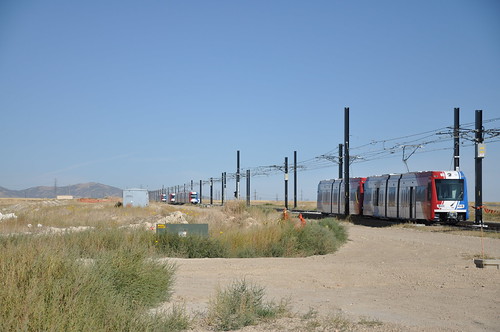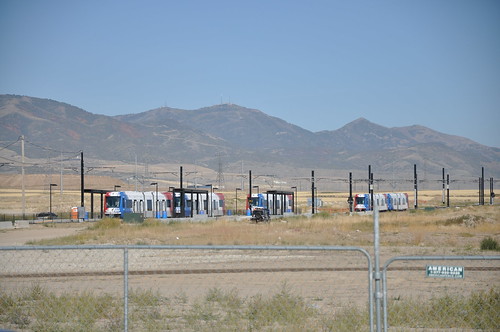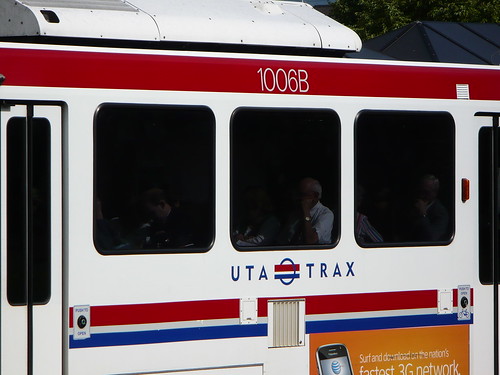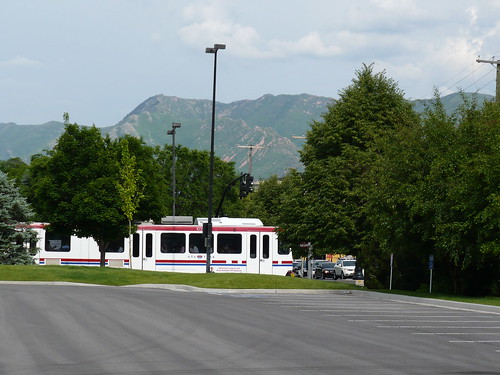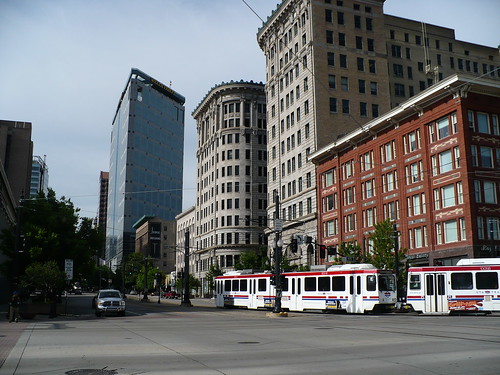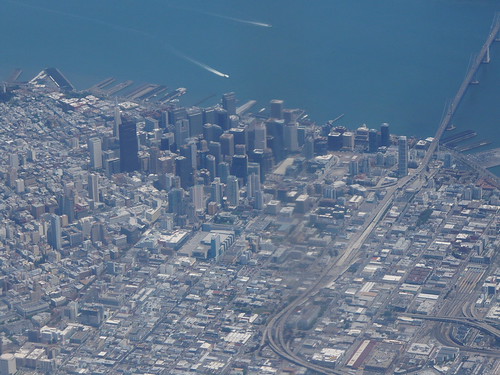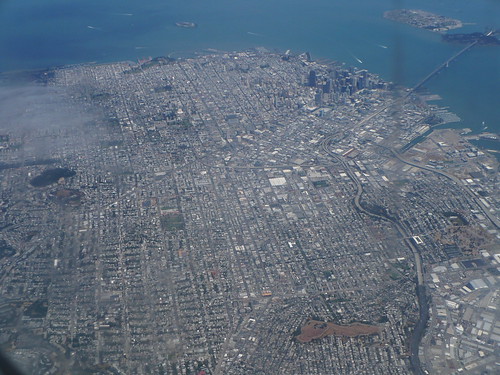It looks like
an amendment was put into the federal transportation budget that would allow Detroit to use a LRT line that it builds with its own money for a federal funding match of the next segment. The funding for the initial segment would come from
foundations. While lines have been funded philanthropically before such as Galveston's trolley, I believe this is a first to be funded primarily with foundation money.
The interesting thing about this amendment is that it would allow the Woodward Ave LRT to be constructed much faster than it would have otherwise under the usual new starts process. The general wait time for funding is 10 years and many cities find that such a time commitment increases costs and stretches political will. But there is a catch, the amendment doesn't say anything about the NEPA environmental process which could hamper the project. The amendment reads
as follows:
SEC. 173. Hereafter, for interstate multi-modal projects which are in Interstate highway corridors, the Secretary shall base the rating under section 5309(d) of title 49, United States Code, of the non-New Starts share of the public transportation element of the project on the percentage of non-New Starts funds in the unified finance plan for the multi-modal project: Provided, That the Secretary shall base the accounting of local matching funds on the total amount of all local funds incorporated in the unified finance plan for the multi-modal project for the purposes of funding under chapter 53 of title 49, United States Code and title 23, United States Code: Provided further, That the Secretary shall evaluate the justification for the project under section 5309(d) of title 49, United States Code, including cost effectiveness, on the public transportation costs and public transportation benefits.
But the reason why the amendment had to be created is because federal funding has lots of strings and these matches are quite tricky. And while many cities would like to skip the new starts process initially by building the first line themselves, the
NEPA rules are not structured to allow this. Several different cities have tried successfully and unsuccessfully to do something similar with their match process however the key sticking point is always the NEPA process and following the environmental rules.
Initially Houston looked into using the Main Street Line as a match for the next projects but that idea smoldered. Metro did however get an investment
"credit" in the form of an Earmark for future fixed guideway construction. What happened to this money is unknown, though it seems as if it was just put into the pot for the five line expansion.
In 2005 Kay Bailey Hutchinson
sought to fund 100% of two lines in Houston through the same mechanism while the city saved up for three others. This was blocked by Tom Delay and John Culbertson (who is still blocking the University Line) because they didn't feel it was following the law. Of course this was just a good excuse to block light rail for those two jokers. Houston eventually put the lines into the New Starts process and is seeking 49% of two out of five lines. Because they weren't able to use the first two lines as a match, they are likely leaving $270M on the table because they are not going for funding on two they are building on their own.
Salt Lake City looked to build their five lines faster by creating a
memorandum of understanding whereby 20% of the total projects cost was funded by the FTA. This would fund the Mid Jordan Line at 78% federal and the remainder of the Draper line while UTA built the others as a match. However the office of management and budget rescinded this deal in 2008 when they felt that it was in violation of NEPA. It is believed that the feds decided that this wasn't legal because when the MOU was signed all of the lines entered into the contract with the federal government. Because not all the lines went through the NEPA process, it was thought that they would be constructed outside of the rules set forth by the federal government for environmental process. The FTA is said to still be honoring the deal, even if it is outside of the MOU document.
This was also worrisome to the FTA because it was seen as a precedent that would set off a wave of deal making which it eventually did with Charlotte. In 2008 Charlotte
tried to make a deal that would have funded the Northeast Corridor at 80% while platform extensions for the South Corridor and the Northeast Corridor were constructed with local funds. This deal never came to pass. Finally San Francisco built the T Third line with local funds but went through the NEPA process therefor allowing it to be used as a match legally within the federal process. Nancy Pelosi still had to put
an amendment in a spending bill but the line is currently being used as a match for the Central Subway project.
With all these examples, the federal match amendment still doesn't address the NEPA issue that came up in Salt Lake City and San Francisco. Ultimately it would be nice for cities to make big deals so that they can build transit networks faster than they would ultimately be able to under the current rules that keep lines in planning for ten years. So while Detroit might have gotten this match language, I would expect the OMB to jump in at some point and derail it because once the match project is seen as part of the whole deal, it is likely that they will believe the first segment would be subject to the rules of the new starts process including NEPA as well.
 As an interesting side note, Broaddus' study noted that two ecosuburbs were the same except for parking provisions:
As an interesting side note, Broaddus' study noted that two ecosuburbs were the same except for parking provisions:
 And a more recent image in 2006
And a more recent image in 2006







 2006
2006 2009
2009
